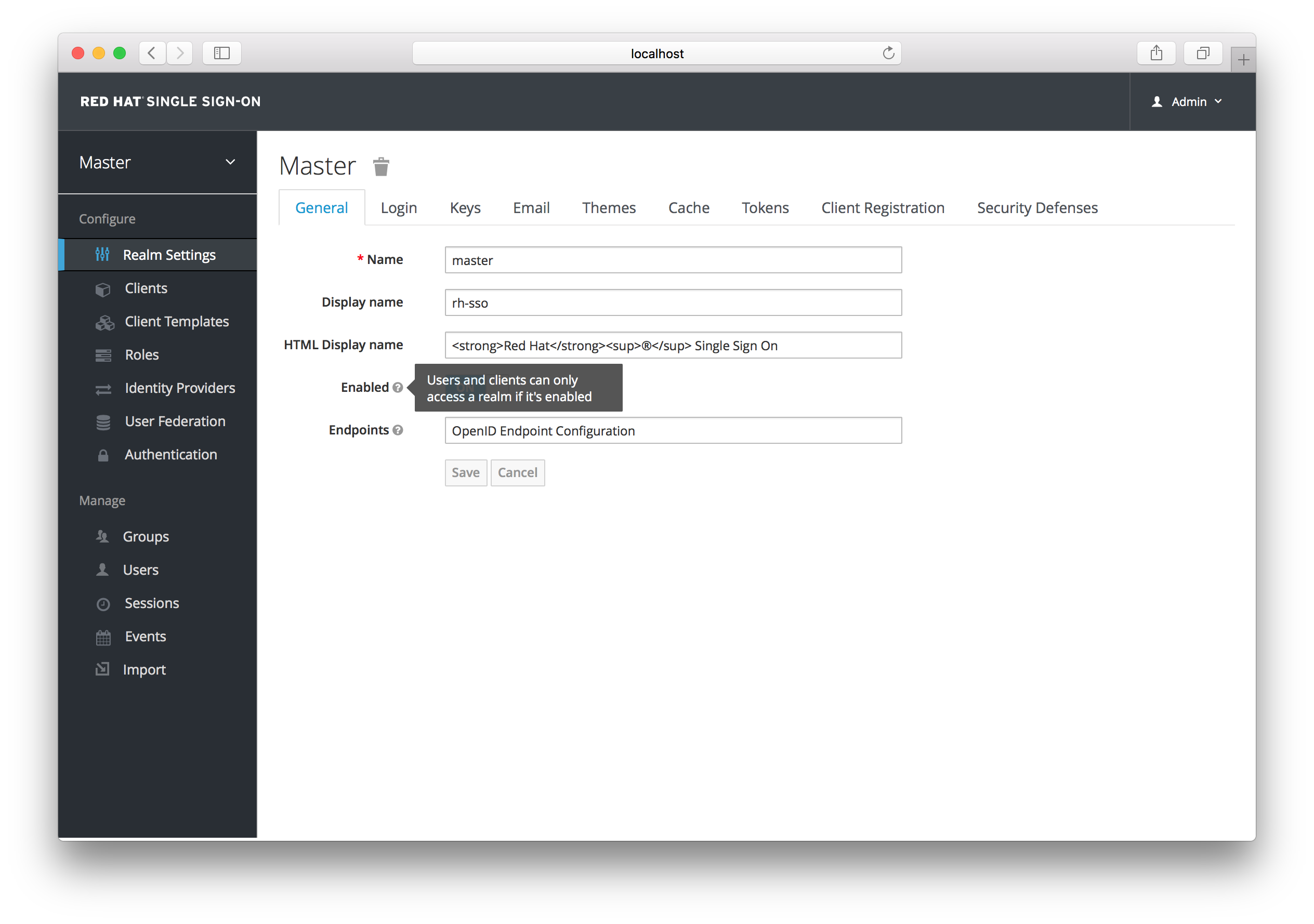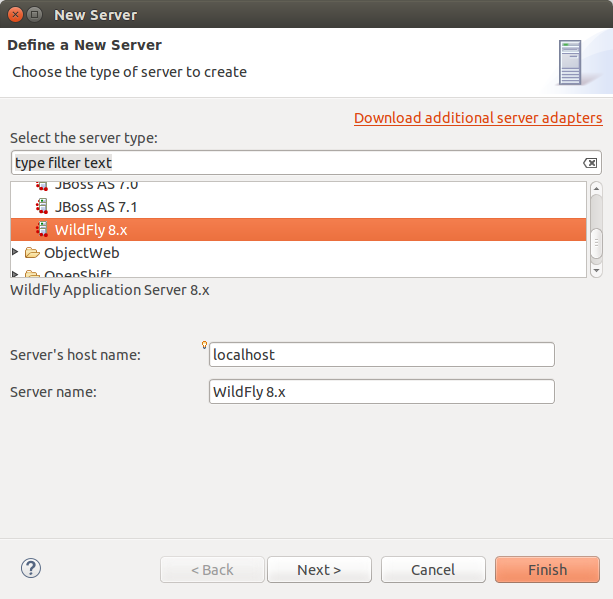As we all know that JBoss AS has been renamed to WildFly. A lots of new features has been added and lots of has been upgraded. Finally WildFly 8.0.0 Final has been released on Feb 11.2014. WildFly Project Lead Jason Greene announced the same.
Wildfly 8 administration guide pdf download. Wildfly 8 administration guide pdf download. Issuu company logo. Target audience. This document is a guide to the setup, administration, and configuration of WildFly 8. Before continuing, you should know how to download, install and run WildFly 8. For more information on these steps, refer here: Getting Started Guide. Examples in this guide. The examples in this guide are. This document is a guide to the setup, administration, and configuration of WildFly. Before continuing, you should know how to download, install and run WildFly. For more information on these steps, refer here: Getting Started Guide. Examples in this guide.
WildFly 8 is Red Hat‘s Java EE 7 compliant open source application server. The Main features are as below:
Java EE 7 Compatibility
The biggest change in this is that now WildFly 8 is official Java EE7 Certified.
High Performance Web Server
Undertow is new high performance web server written in Java. Now this has been implemented in WildFly 8. This is really designed for high throughput and scalability and can handle millions of connections. Undertow’s lifecycle is completely controlled by the embedding application. This is extremely lightweight with core jar having size of 1MB and embedded server using less than 4MB of heap space. This is really great.
3Port Reduction
Since it is using Undertow which support for Upgrading HTTP, which will allow multiple protocols to be multiplexed over single HTTP port. WildFly 8 has moved nearly all of its protocols to be multiplexed over two HTTP ports: one is management and another one is application port. This is really a big change and benefit to cloud providers (such as OpenShift) who run hundreds to thousands of instances on a single server. In total, it has two default ports for configuration and they are 9990 (Web Administration Console) and 8080 (Application Console).
Management Role Based Access Control & Auditing
This is the new and interesting thing implemented in WildFly 8. By using this we can create different users and can assign those one to different roles as per requirements. I’ll show you later with screen shots.
Logging
The management API now supports the ability to list and view the available log files on a server. Now, we have attribute called “add-logging-api-dependencies” available for any kind of deployments in which we want to skip container logging. This will disable the adding of the implicit server logging dependencies. We have another option i.e. we can use a jboss-deployment-structure.xml to exclude the logging subsystem. Using this, it will help to stop the logging subsystem from going through any deployment.
We can also make use of another parameter i.e. use-deployment-logging-config for enabling/disabling processing of logging configuration files within a deployment.
Note: System Property that we were using for disabling per logging has been deprecated from this version.
Clustering
Again Big change is one clustering. All Features related to Clustering support had been changed in WildFly 8 and these includes as below:
- Distributed web session has been optimized for it with new Java Based Web Server i.e. Undertow.
- mod_cluster support for Undertow.
- Optimized Distributed SSO(Single Sign-On) capabilities and support for Undertow.
- New/optimized distributed @Stateful EJB caching implementation.
- WildFly 8 added some new public clustering API.
- For creating singleton services it provides new public APIs.
CLI Improvements
CLI Configuration has also been improved. You know All admin love to work on CLI ;). So, now we can create alias for particular server and then can use that alias whenever want to connect to that server using connect command.
There are still lots of enhancements and updates done in WildFly 8. You can check all these at:
Installation of WildFly 8 in Linux
Before moving ahead with Installation make sure that you have Java EE 7 installed on your system. WildFly 8 will not work with previous revisions. Please follow the below guide to install Java EE 7 in the Linux systems.
Step 1: Downloading WildFly 8
Jboss Wildfly Download
Use the following link to download the latest WildFly zip file.
You may also use ‘wget‘ command to download directly on the command line.
Copy zip file to any preferred location (e.g. ‘/data/‘ in my case) and extract using ‘unzip’ command.

Step 2: Setting Environment Variables
Now set some environment variables. You can set these on system wise or within your configuration files. Here I am setting within configuration files standalone.sh and standalone.conf in ‘bin‘ folder.
Add these two following lines to standlone.sh/standlone.conf files. Please specify your WildFly installation location and Java Home location.
Note: For whole system wide, you can set it under ‘/etc/profile‘ file.
Step 3: Starting WildFly 8
Now start server i.e. for standalone mode use ‘standalone.sh‘ and for domain mode use ‘domain.sh‘.
But, here I am starting in standalone mode. By default it will get start by ‘standalone.xml‘ file, But You can also start with some other configuration using ‘–server-config‘ option.
As below I am starting server with ‘standalone-full-ha.xml‘ and this file is present in “$JBOSS_HOME/standalone(profile)/configuration/”.

Sample Output
Step 4: Acessing WildFly 8
Now you can point your browser to ‘http://localhost:8080‘ (if using the default configured http port) which brings you to the Welcome Screen.
Wildfly Welcome Screen
From here, you can access WildFly community documentation guides and enhanced web-based Administration Console access.
Wildfly 8 Administration Guide Pdf Download Software
Step 5: Managing WildFly 8
WildFly 8 provides two administrative consoles for managing running instance:
- web-based Administration Console
- command-line interface
Before connecting to administration console or remotely using the command line, you will need to create a new user using the ‘add-user.sh‘ script in the bin folder.
Next, go to ‘bin‘ directory, set ‘JBOSS_HOME‘ in add-user.sh (if variable is not set on system bases) and create user as below.
Once starting the script you will be guided through the process to add a new user: Agfa billy compur manualidades.

Sample Output
Now access the web-based Administration Console at ‘http://localhost:9990/console‘ and enter the new created username and password to directly access the Management Console.
First Screen After login.
WildFly Web Panel
If you prefer to handle your server from the CLI, run the ‘jboss-cli.sh‘ script from the ‘bin‘ directory that offers the same capabilities available via the web-based UI.
For more information, follow the official WildFly 8 documentation at https://docs.jboss.org/author/display/WFLY8/Documentation.
Read Also : WildFly (JBoss AS) – How to Access and Manage CLI Using GUI